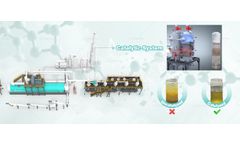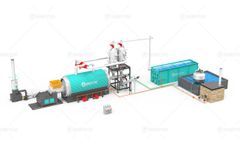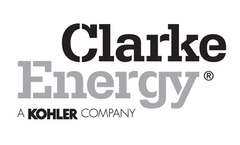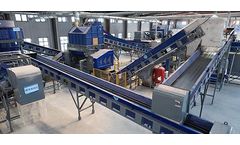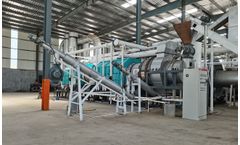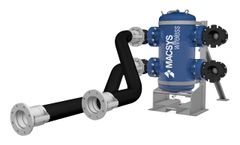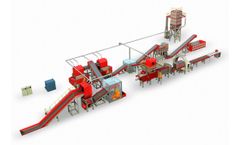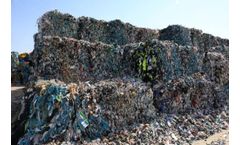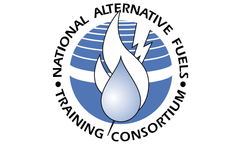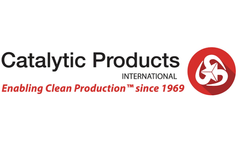Alternative Fuel Production Articles & Analysis
22 articles found
Catalytic pyrolysis has emerged as a pivotal advancement in thermal conversion technologies, particularly for transforming complex hydrocarbon feedstocks into higher-value liquid fuels. By incorporating specialized catalysts into the pyrolysis process, industrial operators can significantly improve oil yield, enhance product quality, and optimize energy ...
Plastic pyrolysis, a method of converting plastic waste into valuable fuels, has emerged as a significant alternative fuel production solution. ...
HELECTOR, a subsidiary of ELLAKTOR Group, is an expert in the waste management and green energy production sector in South Eastern Europe. To further their commitment to alternative fuel production and biomass exploitation, HELECTOR selected Clarke Energy Hellas to supply and install a 3.52MW landfill gas power plant in ...
In the ever-evolving landscape of industrial processes, continuous tyre pyrolysis has emerged as a game-changing solution, particularly in the realm of alternative fuel production. Pyrolysis, the thermal decomposition of organic materials in the absence of oxygen, has been harnessed to tackle one of the pressing challenges of our time - waste ...
Solid waste is used, and the final discharge is SRF alternative fuel. In 2023, the integrated alternative fuel preparation system for industrial waste and bulky waste in Guangdong, China, has been officially put into operation. The project can dispose of 100,000 tons of industrial waste and 40,000 tons of large waste every year. Har Den's SRF/RDF alternative fuel preparation technology is used ...
The power released with the split compounds creates new reaction products. The charring dust along with the liquid pyrolysis products are separated by condensation. The biochar produced is a valuable by-product. It can be used to produce a variety of biomaterials, starting from fuels to reusable paper and wood. ...
This is particularly the case for limestone, pozzolan, clay and lime hoppers, and at the end of the process for clinker, cement and ash recovery silos. 4- Limit the risks of fouling related to the use of alternative fuels throughout the cement production process. Today, the vast majority of cement plants have increased the use of ...
If you were a coal-burning company, would you like to choose $60 alternative fuels per ton or $180 coal fuels per ton? Of course, such a direct comparison is not reasonable because alternative fuels differ from coal in terms of calorific value of combustion and disposal costs. ...
Encouraging the application of alternative energy sources such as hydrogen, biofuels and waste-derived fuels in the steel, cement, chemical and other industries will help reduce carbon dioxide emissions. The preparation of solid recovered fuel (SRF)/refused-derived fuel (RDF) from general industrial solid waste is an important ...
Chinese environmental engineering and cement manufacturing company Huaxin needed to find an efficient solution for handling RDF between two of their company operating locations. To solve this need they introduced a baling and wrapping line for packaging RDF material, and an automatic bale opener for opening the wrapped bales. A Cross Wrap Direct wrapper was their choice to be paired with Chinese ...
Consequently, the risk of fire increases exponentially during mechanical processing, when converting waste into alternative fuels. Due to the technology used, lithium batteries, along with other highly flammable materials such as tar-soaked textile waste, have therefore become one of the most common hazards for serious fires. ...
This article is the first in a series that will take a close look at alternative fuels production and source materials. Over the next several months, we will cover natural gas, propane, ethanol, hydrogen, and fuel cells. ...
On September 25, 2015, the California Air Resources Board (CARB) voted to readopt the Low Carbon Fuel Standard (LCFS), and require a ten percent reduction in carbon intensity of transportation fuels by 2020. The LCFS targets were originally frozen due to a legal challenge. To address the court's ruling, CARB solicited public testimony before readopting an updated version of the LCFS. The modified ...
On March 26, 2015, Senators Rand Paul (R-KY) and Chuck Grassley (R-IA) introduced S. 899, the Fuel Choice and Deregulation Act of 2015, a bill to provide regulatory relief to alternative fuel producers and consumers. ...
At the same time, natural gas production is growing fast due to hydraulic fracturing and plummeting costs. ...
ByEnsia
On February 26, 2015, the Oregon State Senate passed Senate Bill 324 (SB 324), a measure that would require fuel producers to reduce the amount of carbon in car and truck fuels. ...
The business objective is the production of Solid Recovered Fuels (SRF) at the location of Retznei (South of Styria) close to the cement works of Lafarge in Austria. ...
EPA completed new rules that changed the way they look at "nontraditional" fuels. Using these alternative fuels to generate energy makes a facility subject to emission limits and rules regulation boilers. In December U.S. Environmental Protection Agency (EPA) completed new rules that changed the way they look at'nontraditional" fuels. Materials that can meet the newly revised standards are ...
Increase of petroleum diesel usage and its environmental pollution necessitate the study of alternate fuel production. Vegetable oils are the viable alternate form of non–polluted, renewable fuel to diesel engines. ...
Natural gas and, specifically, compressed natural gas (CNG) fueling stations and vehicles running on CNG were all over the industry news in 2012. Organizations such as Republic and Veolia added CNG collection vehicles to their fleet makeup in Pennsylvania, Texas and Wisconsin, while Waste Management opened more than a dozen CNG fueling stations to support its growing fleet of CNG vehicles. While ...

